
Particularly appreciated for its large foliage and the intense scent of its flowers, Magnolia is a plant widely used for ornamental purposes to embellish woods and public gardens or for bonsai cultivation. It is also considered a symbol of good luck and its flowers are traditionally attributed the meaning of beauty, dignity and modesty (probably because the corollas darken as soon as they are touched or bathed in the rain).
There are two species of Magnolia bonsai, an evergreen of American origin and one with deciduous leaves of Asian origin, but it is advisable to direct your choice towards the second strain and in particular towards the Magnolia stellata, which has flowers and fruits of limited size, proportionate to the miniaturized shape of the trunk. From the structural point of view, the Magnolia bonsai has an irregular trunk, densely branched at the base, covered with a smooth grayish bark. The thick foliage has a rounded, oval or rounded posture, and is formed by pink-silver branches and by oval or elliptical leaves, light green in color, which turn yellow or bronze in autumn, before falling. In spring the shrub produces a spectacular flowering, characterized by large solitary flowers, star or cup, which have ten to fifteen petals of pure white or pink and elongated shape.
-
bonsai
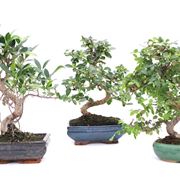 The art of bonsai is something extremely ancient and elevated, an art that also in our country finds many followers and many enthusiasts. In this section of giardino.it entirely dedicates …
The art of bonsai is something extremely ancient and elevated, an art that also in our country finds many followers and many enthusiasts. In this section of giardino.it entirely dedicates … -
Carmona
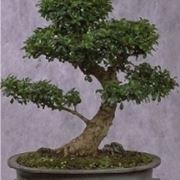 Hi, I received a bonsai as a gift and I would like to know more particular news than what I read on your site, which I think is very very useful: I can contact you or the expert in com …
Hi, I received a bonsai as a gift and I would like to know more particular news than what I read on your site, which I think is very very useful: I can contact you or the expert in com … -
Bonsai
 Hi! I wanted to ask one thing: I am very passionate about bonsai, but something just born and I would like to know how to make them, just take normal plants or need special plants …
Hi! I wanted to ask one thing: I am very passionate about bonsai, but something just born and I would like to know how to make them, just take normal plants or need special plants … -
Bonsai cuttings
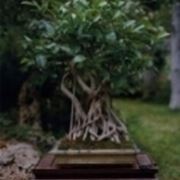 DO YOU THINK IS IT POSSIBLE TO CREATE TALEE FROM ANOTHER BONSAI? …
DO YOU THINK IS IT POSSIBLE TO CREATE TALEE FROM ANOTHER BONSAI? …
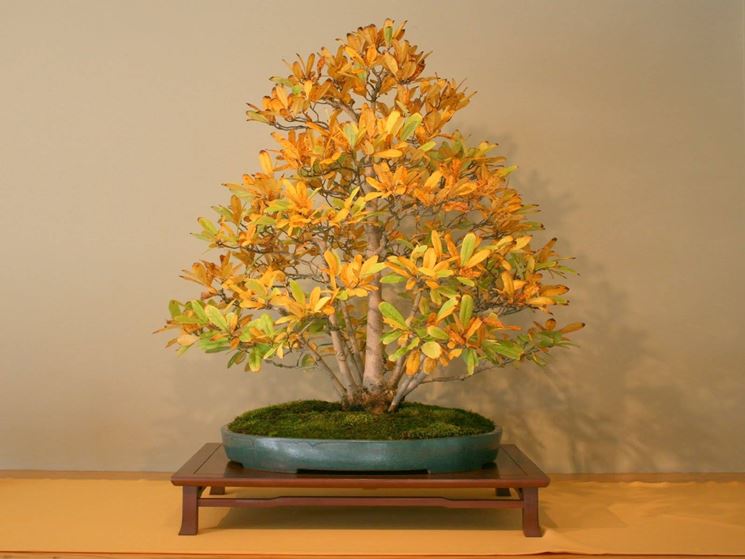 Whether they are evergreen or deciduous, Magnolias have similar needs. The Magnolia bonsai is an outdoor plant which must be ensured abundantly in the sun: it could grow even in the shade, but in spring it would have a more scarce and less vivid flowering.
Whether they are evergreen or deciduous, Magnolias have similar needs. The Magnolia bonsai is an outdoor plant which must be ensured abundantly in the sun: it could grow even in the shade, but in spring it would have a more scarce and less vivid flowering.
Being a rather robust shrub, the Magnolia can bear minimum temperatures, but in case of too cold winters it is advisable to protect it with adequate screens or by covering the ground with straw and dry leaves. It is also preferable not to expose it excessively to wind and frost, to prevent the buds from being ruined or damaged.The Magnolia bonsai should be watered as needed throughout the year, generally every fortnight, avoiding excesses and making sure that the soil is completely dry, as repeated stagnation could deeply damage the roots. During the summer season it is necessary to avoid watering during the hot hours and carry out the operation in the evening, so that the soil is kept moist for the whole night; during the winter season, on the other hand, it is not recommended to water when the sun has already set, as the bonsai would be subject to the risk of freezing. and during flowering. The fertilizer must be of a mineral nature, with a prevalence of nitrogen and iron sulphate, and can be added to the irrigating water; it is preferable to use a liquid fertilizer and the operation must be carried out after having appropriately moistened the soil, to avoid damage to the root mass.
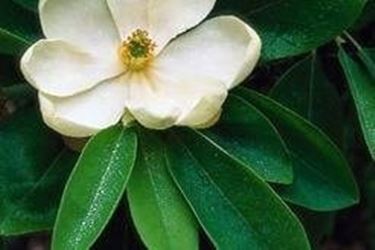 The soil of the Magnolia bonsai must be renewed every two to three years. The plant does not tolerate calcareous or clayey substrates, while it prefers an acid or neutral soil, fertile but above all very well drained, to which humus and peat should possibly be added. Before pouring the soil into the pot, it is advisable to eliminate the woody roots and arrange on the bottom, on the drainage holes, some crushed stone which will prevent the substrate from escaping during watering and will act as a barrier for parasites. The frequency of repotting interventions must decrease as the Magnolia bonsai specimen becomes an adult, when it is sufficient to repot every four to five years.
The soil of the Magnolia bonsai must be renewed every two to three years. The plant does not tolerate calcareous or clayey substrates, while it prefers an acid or neutral soil, fertile but above all very well drained, to which humus and peat should possibly be added. Before pouring the soil into the pot, it is advisable to eliminate the woody roots and arrange on the bottom, on the drainage holes, some crushed stone which will prevent the substrate from escaping during watering and will act as a barrier for parasites. The frequency of repotting interventions must decrease as the Magnolia bonsai specimen becomes an adult, when it is sufficient to repot every four to five years.
The Magnolia bonsai is a plant characterized by slow and harmonious growth, therefore it should not generally be pruned. If, on the other hand, corrective interventions are necessary, to remove damaged, diseased or disordered branches, it is necessary to wait for the end of flowering. Instead, you can proceed with the application of stakes during the vegetative period, taking care to protect the bark in the points of encouragement and to intervene on the younger and more flexible branches. A few hours before application, to increase the elasticity of the plant, it is advisable to proceed with a good watering.
Although the Magnolia bonsai is not frequently the object of parasitic attacks, it is always preferable to resort to preventive treatments, administering systemic insecticides and fungicides. However, more than animal parasites, such as aphids, a specimen that fears especially molds, spotting of the foliage, frosts and root rot: it is therefore very important to ensure good drainage to the soil and to repair or adequately cover the plant in the months characterized by a too harsh climate.
Source: www.giardinaggio.it